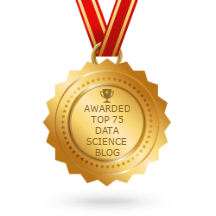Since I use food delivery apps heavily. Both swiggy, ubereats. My views and reflections of data story/measures/ machine learning use cases from these applications
My observations based on application use. Ubereats highlights below activities based on historical data collected
Key Metrics / Measures
Everything that is measurable can be managed, monitored, improved. There have to be more quality aspects to be integrated as we risk ourselves trusting rating for better quality. Hope quality bar keeps improving and story evolves into another version customizing based on personal diet plans and choices. Happy finding the data story behind these food delivery businesses Apps !!!
My observations based on application use. Ubereats highlights below activities based on historical data collected
- Previously ordered restaurants
- Previously ordered items highlighted
- Review based listings
- Projecting estimated delivery times
- Recommending a similar item every day from other restaurants based on historical data
- No option to set preferences for the coming week - Balanced diet customized to need /preferences based on user choices for a week
- Fold quality issues exist no matter how good review ratings are
- Average Order delivery time at different times (Morning / Lunch / Evening / Holidays / Weekends)
- Average Order Order pickup time at different times
- Order acceptance rate
- Clicks/ conversions
- A/B experiment and conversions
- Payments type vs orders
- Average menu browsing time
- Frequently searched items across days / restaurants / seasons
- Predict order delays using Traffic data
- Peak seller's
- Top customers
- Weekday trends
- Top trends based on seasonality
- Forecast on volumes of items based on historical data
- OCR, Recommendation at User Level / Sold together items
- Deep learning for automated food classification, tagging
- Segmenting customers based on Age / Gender / Veg / Non-Veg / Cusine Choices and providing recommendations
- Forecast Order Volumes and assign Delivery partners based on Projected numbers to reduce other delays
Tech Talk -
































